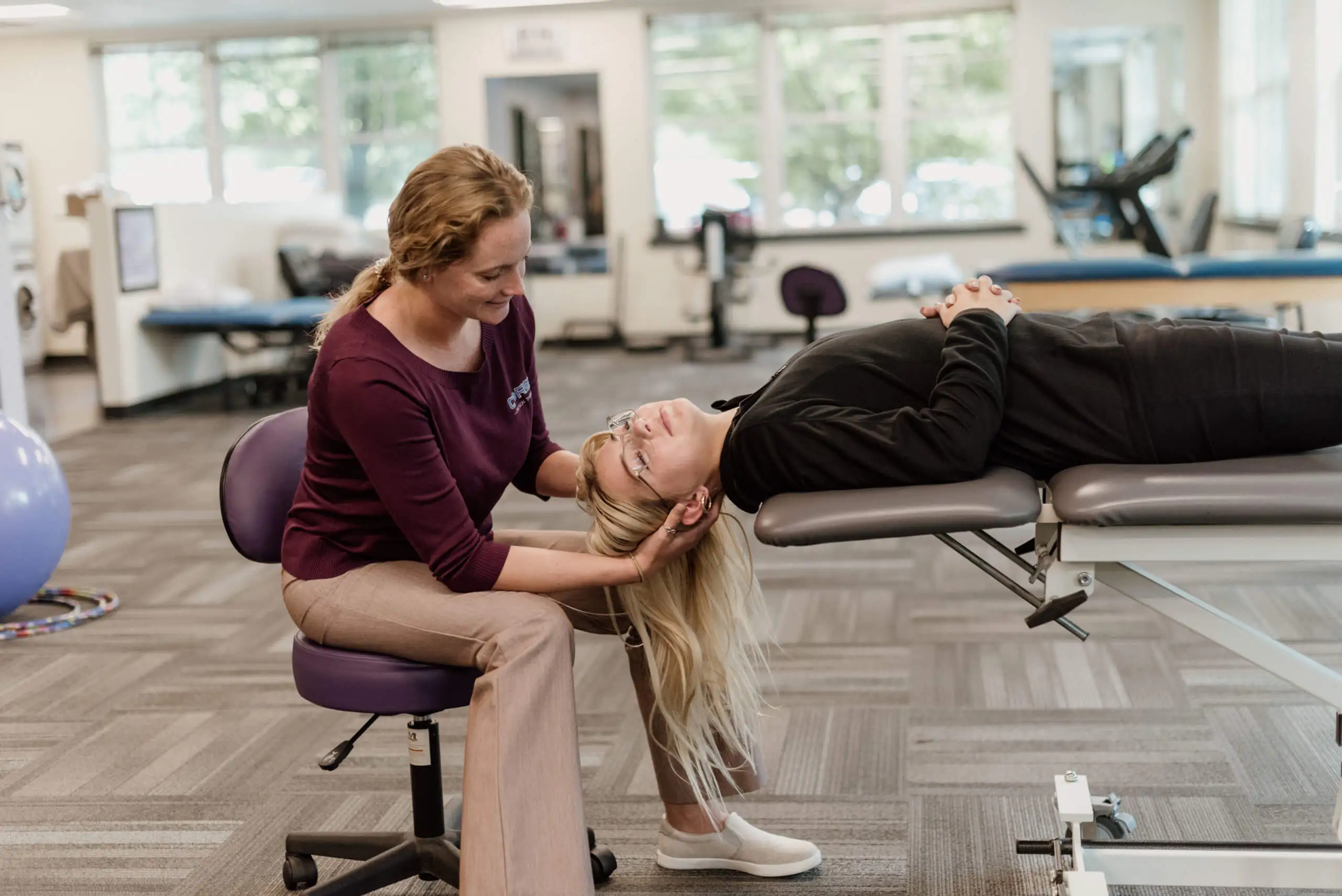If you’ve ever felt dizzy standing up, unsteady on your feet walking across a room, or like the world is spinning when you turn your head — you’re not alone. These are all signs of something deeper going on with your vestibular system, and they can seriously affect your day-to-day life. The good news? There’s a proven way to address it that doesn’t rely on meds or “just living with it.” It’s called vestibular therapy — and at Simply Physio, it’s one of the things we do best.
What Is Vestibular Therapy?
Vestibular therapy — also known as vestibular rehabilitation therapy (VRT) — is a specialized form of physical therapy designed to treat balance disorders, dizziness, vertigo, and problems related to the inner ear.
The goal is simple: retrain your brain and body to process balance signals correctly so you can feel steady, confident, and in control again. But the way we get there? That’s custom to you. Vestibular therapy isn’t a one-size-fits-all solution — and that’s exactly why it works.
This therapy combines:
- Targeted exercises
- Eye/head coordination drills
- Balance retraining
- Habituation strategies (to reduce sensitivity to movement)
It’s not just about treating symptoms — it’s about fixing the root cause.
Understanding the Vestibular System and Why It Can Go Haywire
Your vestibular system is located in your inner ear and sends information to your brain about motion, head position, and spatial orientation. It helps you stay balanced and coordinated. When something in that system isn’t working right — whether it’s from injury, illness, or aging — your brain starts receiving conflicting signals.
That’s when you start to feel:
- Dizziness
- Vertigo (the feeling like you’re spinning)
- Nausea
- Lightheadedness
- Unsteadiness, especially in crowds or low-light settings
- Trouble focusing, especially when moving your head
Sometimes, it’s a one-time episode. Other times, it lingers. That’s where vestibular therapy steps in — to help reset the system.
Common Causes of Vestibular Disorders
Vestibular dysfunction can stem from a bunch of different causes — some sudden, some progressive. At Simply Physio, we start by identifying the root cause before tailoring your treatment. Here are some of the most common triggers:
1. Benign Paroxysmal Positional Vertigo (BPPV)
One of the most common and easily treatable causes of dizziness. It happens when tiny crystals in your inner ear (called otoconia) get dislodged and float into the wrong canal. The result? Sudden dizziness with head movements. We can often treat this in just a session or two with specific repositioning maneuvers.
2. Vestibular Neuritis or Labyrinthitis
These are viral infections that inflame the vestibular nerve or the inner ear itself. They often come with intense vertigo, nausea, and balance issues that can linger for weeks.
3. Concussions and Head Injuries
Post-concussion syndrome often includes vestibular issues. The brain struggles to interpret balance signals, making movement (especially visual motion) overwhelming. Vestibular therapy is a key piece of concussion recovery.
4. Meniere’s Disease
This chronic condition involves fluid buildup in the inner ear, causing episodes of vertigo, tinnitus, and hearing loss. While not curable, symptoms can often be managed through vestibular rehab.
5. Aging and Degeneration
As we age, the vestibular system (like everything else) starts to wear down. That makes seniors more vulnerable to falls — but also more responsive to proactive balance training.
How Vestibular Therapy Works at Simply Physio
Here’s what makes vestibular rehab different from “regular” PT: we’re not just working on strength or flexibility — we’re working on your brain’s ability to recalibrate and adapt.
Your First Visit:
We start with a full vestibular assessment — not just asking about your symptoms, but running through:
- Eye movement testing
- Positional testing (to diagnose BPPV)
- Balance tests
- Walking/gait analysis
- Visual-vestibular interaction tests
From there, we design a therapy plan that’s tailored to you.
The Treatment Process:
Depending on your condition, you might work through:
- Canalith repositioning maneuvers (like the Epley or Semont) to correct BPPV
- Gaze stabilization exercises to retrain your eyes and brain to work together
- Balance and gait training to help you feel secure moving in all environments
- Habituation exercises to reduce dizziness triggers by exposing your brain in controlled ways
Everything is progressive, personalized, and meant to be doable at home, too — so you’re not stuck waiting between appointments to feel better.
When to Consider Vestibular Therapy
If you’re wondering whether this is just a “phase” or something worth getting help for, here’s the truth: dizziness isn’t normal. It’s not something you should just “put up with,” and it’s not just a side effect of getting older.
Red Flags That Mean It’s Time to Call Us:
- You feel dizzy or unsteady regularly
- Moving your head triggers symptoms
- You’ve had multiple falls or near-falls
- You avoid certain activities (or places) because of balance concerns
- You’ve had a concussion or head injury
- Medications or tests haven’t helped — or made it worse
You don’t need a referral to get started with vestibular therapy at Simply Physio. If you’re dealing with this stuff daily (or even weekly), let’s talk.
What to Expect From Results
The great thing about vestibular therapy is that it’s often very effective — and faster than most people expect. Many patients with BPPV feel significantly better in 1–2 sessions. For more complex conditions, you may need a few weeks of consistent work, but the improvements in stability, confidence, and comfort are huge.
We’ll be honest with you from day one about what to expect and keep reassessing your plan as you go. Our goal is always the same: to get you back to doing the things you love — safely and without fear.
How to Prevent Vestibular Flare-Ups and Keep Your Balance Sharp
Once you’ve gone through vestibular therapy, we want to keep you out of therapy. That means building a foundation that lasts.
Here’s how:
- Stay consistent with your home exercises (yes, even when you feel better)
- Manage stress, which can heighten dizziness
- Stay hydrated and fuel your body right — especially in hot or high-stimulation environments
- Avoid rapid head movements if you know they’re a trigger (or ease into them with support)
- Do regular balance training — we’ll give you exercises to keep your system sharp
Balance is like strength — if you don’t use it, you lose it. So let’s keep using it.
Book Your Vestibular Therapy Appointment at Simply Physio Today
If you’re tired of feeling off-balance, dizzy, or anxious about movement — vestibular therapy might just be the missing link. At Simply Physio, we specialize in helping people get their footing back — literally. Our expert therapists work one-on-one with you to diagnose what’s really going on and create a plan that fits your life, your goals, and your body.
You don’t need to tough it out or rely on medications that only mask the symptoms. Let’s get to the root and build your stability from the ground up.
Schedule your vestibular therapy consultation with Simply Physio today and take the first step toward balance, confidence, and peace of mind.



